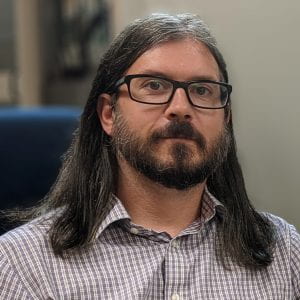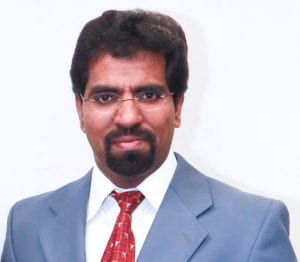
Aaron Catledge, Ph.D., associate professor in the Department of Physics, is principal investigator on an NSF grant that will bring spark plasma sintering technology to UAB.
Read the full story here as posted in the UAB Reporter.

Aaron Catledge, Ph.D., associate professor in the Department of Physics, is principal investigator on an NSF grant that will bring spark plasma sintering technology to UAB.
Read the full story here as posted in the UAB Reporter.

Congratulations to Paul Baker on this nice coverage on a recent award by Alabama Department of Economic and Community Affairs (ADECA).
You can read the UAB News article here.
Dr. Yogesh K. Vohra is a Fellow of the International Association of Advanced Materials (FIAAM) in recognition for his contribution to “Advancement of Materials to Global Excellence.”
Click image below to view video lecture titled Microwave Plasma Chemical Vapor Deposition of Diamond and Novel Superhard Materials.
The Advanced Materials Characterization (AMC) Core has been selected an institutional research core (Director: Dr. Paul Baker and co-Director: Dr. Vinoy Thomas). It will be a part of the fifteen cores that are supported centrally by the office of Vice President for Research. The AMC Core will provide a broad range of services related to the research and development of materials. Our services will cover the analysis of basic properties of materials such as the structure, composition, and hardness. The types of materials to be analyzed include biomaterials, nanomaterials, metals, ceramics, thin films, composite materials, and semiconductors.
The AMC Core will include the University’s only scanning electron microscope (SEM), which provides high resolution images of surfaces of a broad range of materials, including soft matter (biological samples) and has elemental analysis capability (EDX). The x-ray photoelectron spectrometer (XPS) is a powerful surface analysis (probing depth of only 3-10nm) instrument that provides elemental composition and chemical bonding information with small spot size (minimum 10 micrometers) and surface mapping capability. The multipurpose X-ray diffractometer (XRD) is a state-of-the-art instrument purchased in 2018 that provides information on crystal structure and phase identification, particle size and shape analysis (SAXS), thin film analysis, epitaxial layer analysis, and can be upgraded to include even additional capabilities. The micro-Raman spectrometer is a high-resolution spectrometer that analyzes the vibrational modes of the material to provide information about the molecular structure of a material. The nanoindenter measures the hardness of a material near the surface and can measure polymers and thin films. These materials growth and characterization facilities are being combined and proposed as a single core to provide materials characterization under one managed facility and serve as a catalyst for innovative materials discovery at UAB. One of the key strengths of the core will be the broad support from industry usage as well as the multi-departmental use. This multi-disciplinary approach to characterization of advanced materials is a part of the UAB research mission.
Dr. Yogesh K. Vohra is pleased to announce that the following collaborative seed grants from UAB were selected for funding by the NSF EPSCoR RII program in Alabama for FY2021. These are collaborative grants between two Alabama institutions that are part of this NSF supported state-wide consortium in plasma science and technology. https://www.uah.edu/cpu2al
Dr. Aaron Catledge (PI), Awarded Amount $40,000
Title: Low-temperature plasma as a means to create superhard high-entropy metal diborides via boro-carbothermal reduction
Collaborating Institution: Tuskegee University
Dr. Cheng-Chien Chen (PI), Awarded Amount $40,000
Tile: Assemble Plasmon and Phonon Polaritons in Atomic-Scale van der Waals Hybrids
Collaborating Institution: Auburn University
Dr. Vineeth Vijayan (PI) and Dr. Vinoy Thomas, Awarded Amount $40,000
Title: Low Temperature Dusty Plasma based Nanoparticles Modified Polymer Scaffolds as Potential Biointerface for Bone Tissues
Collaborating Institution: Alabama State University & Auburn University
Dr. Masaru Nakanotani (PI, UAH), Awarded Amount, $40,000
Title:Physics of Collisional Shock Waves :Laser Ablation Experiments, Fluid and Fully Kinetic Simulations
Collaborating Institutions: CFDRC & UAB –Dr. Renato Camata
Congratulations to all the PI’s and their collaborators!

A UAB team led by Dr. Vinoy Thomas, Department of Materials Science & Engineering, has surface engineered 3D Printed polymeric soft biomaterial scaffolds by an in-situ robust synthesis of nanoparticles using low temperature dusty plasma.
The proof-of-concept communication published in ACS Applied Nano Materials, reports a rapid and easy method for nanoparticles (SiNp) synthesis from a liquid precursor into dusty plasma and deposition of them onto 3D printed polymer. “Non-thermal plasma has emerged as a viable method for surface engineering soft materials and biomaterials”, says Dr. Vineeth Vijayan, (first author of the publication), “and we have successfully utilized non-thermal plasma for making super-hydrophilic and blood-friendly materials surfaces in our previous publication in Journal of Materials Chemistry”.
As part of the NSF supported EPSCoR collaborative CPU2AL program, the new method we reported has many appealing attributes:
The future aspects of this present work will deal with (I) functionalization and attachment of SiNp with biochemical moieties by using volatile amino acids in the plasma phase and (II) strategies for preparation titanium dioxide nanoparticles and nanowires via plasma process which in turn could be used for decontaminate corona virus during the current COVID-19 pandemic.